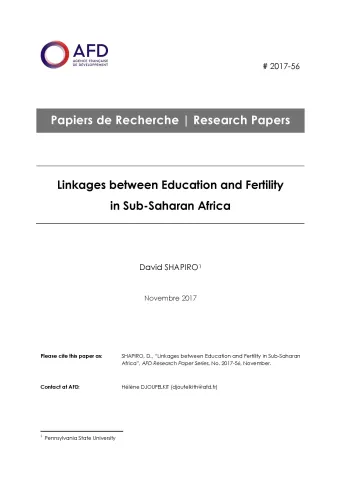Share the page
Linkages between Education and Fertility in Sub-Saharan Africa
Published on

This paper explores linkages between women’s education and fertility in sub-Saharan Africa, using DHS data from about 30 countries. There are three substantive sets of analyses. First, we shed light on several pathways via which fertility is linked to education. We examine how fertility varies by detailed education and place of residence jointly, consider ideal number of children and its relationship to fertility, look at some proximate determinants, and differences in infant and child mortality, all by education and place of residence. The second part identifies, for each country, the importance of changes over time in women’s education and in mortality in contributing to observed declines in fertility. We decompose changes in fertility and identify the importance of changes in education and mortality, separately for urban and rural places. The final set of analyses looks at preferences for low fertility, defined as an ideal number of children of three or fewer. The prevalence of such preferences, as well as how they have increased over time, are documented, and the analyses explore their relationship to women’s education, place of residence, and other factors including population density and subregion. The conclusion provides some speculation on future fertility decline in the region.
Useful Information
-
Authors
-
David SHAPIRO
-
Coordinators
-
Edition
-
56
-
Number of pages
-
32
-
ISSN
-
2492 - 2846
-
Collection
-
Research Papers
